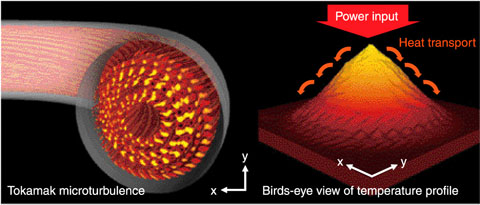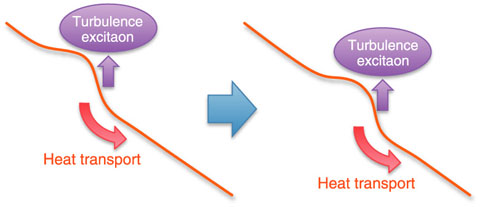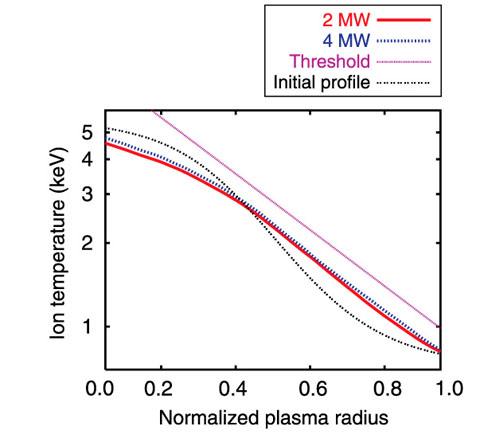
Fig.3-21 Fluctuating electrostatic potential (left) and three dimensional view of temperature profile (right)

Fig.3-22 Avalanche-like heat transport

Fig.3-23 Temperature profiles (log scale) observed in numerical experiments with different power inputs
The production of high-temperature plasma core is important since the core temperature affects the performance of fusion reactor. However, experimental results often have so-called stiff temperature profiles in which the temperature gradient remains below a threshold value, and as a result, the increase in the core temperature is limited. Such profiles are produced under a power balance condition between the power input to plasma core and the turbulent transport induced by fluctuations. Therefore, it was difficult to understand stiff temperature profiles or the mechanism of dynamic heat transport, which varies such that the temperature gradient remains almost constant, by performing conventional numerical experiments for evaluating turbulent transport by assuming a prescribed or fixed temperature gradient.
In this work, we developed a new numerical experiment (Fig.3-21), where both turbulent transport and self-consistent profile formations are computed based on first principle under a fixed power input as in the experiment. The temperature profiles observed in the simulation show theexistence of a balanced state in which an increase in the input power results in an increase in the heat transport with small changes in profiles. Further, the results also show that the transport phenomena are similar to the transport phenomenon in a sand pile where dynamic transport of sand keeps a constant pile height (Fig.3-23). This transport phenomenon is induced by nonlocal avalanche-like heat transport produced by the interaction between the temperature fluctuations and turbulent transport (Fig.3-22). It is also found that in plasmas, avalanches of holes or clumps with certain temperature gradient become dominant depending on the radial electric field shear, and therefore, unidirectional propagation occurs, while in sand piles, holes and clumps coexist and propagate in opposite directions. This indicates a possibility of controlling avalanche-like heat transport by changing the structure of the radial electric field.
In this work, we first clarified the stiffness of temperature profiles on the basis of first-principles calculations, and we offered the physics basis for estimating and predicting the plasma transport properties in ITER and DEMO reactors.